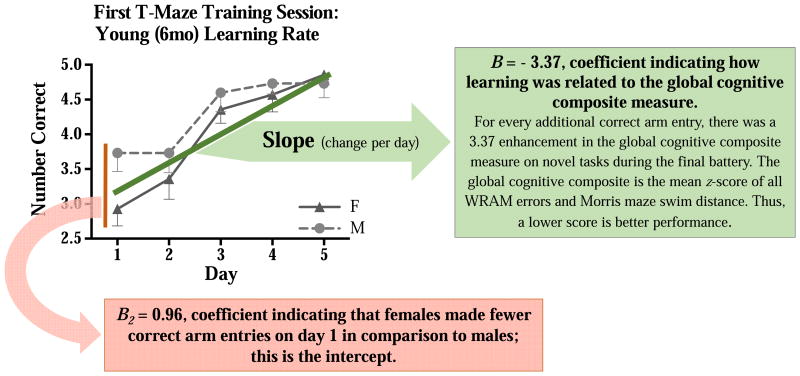Figure 8.
Mean±SE number of correct arm choices across days on the T-Maze during the first maze session. Specifically, the graph displays the learning curve of male and female Aged Cognitive Training rats during their initial/first cognitive training session, when they were 6 months old. The linear growth model demonstrated that female rats had a steeper slope across days than males, suggesting that females learned the task at a faster rate [B3 = -0.27, p < 0.05]. Because females made fewer correct arm entries on day 1 in comparison to males [B2 = 0.96, p = .003, assessing the intercept], this impacted the slope of the line. A global cognitive composite measure was calculated for the novel tasks so that relationships between learning when young, and learning when old, could be evaluated. The number of WRAM total errors and swim distance on the Morris maze (all days and trials for both mazes), were converted to z-scores. These z-scores equally weighted the results from the two mazes, even though each maze used a different dependent variable metric (errors committed and swim distance, respectively). For both sexes, rats that learned the training task faster demonstrated enhanced performance when aged on the composite measure of the novel tasks tested during the final maze battery [B = - 3.37, p < 0.05]. This association between the learning rate when young and subsequent aged memory performance was strong according to Cohen's (1988) conventional norms in psychological science [r = 0.83, p < 0.05].

